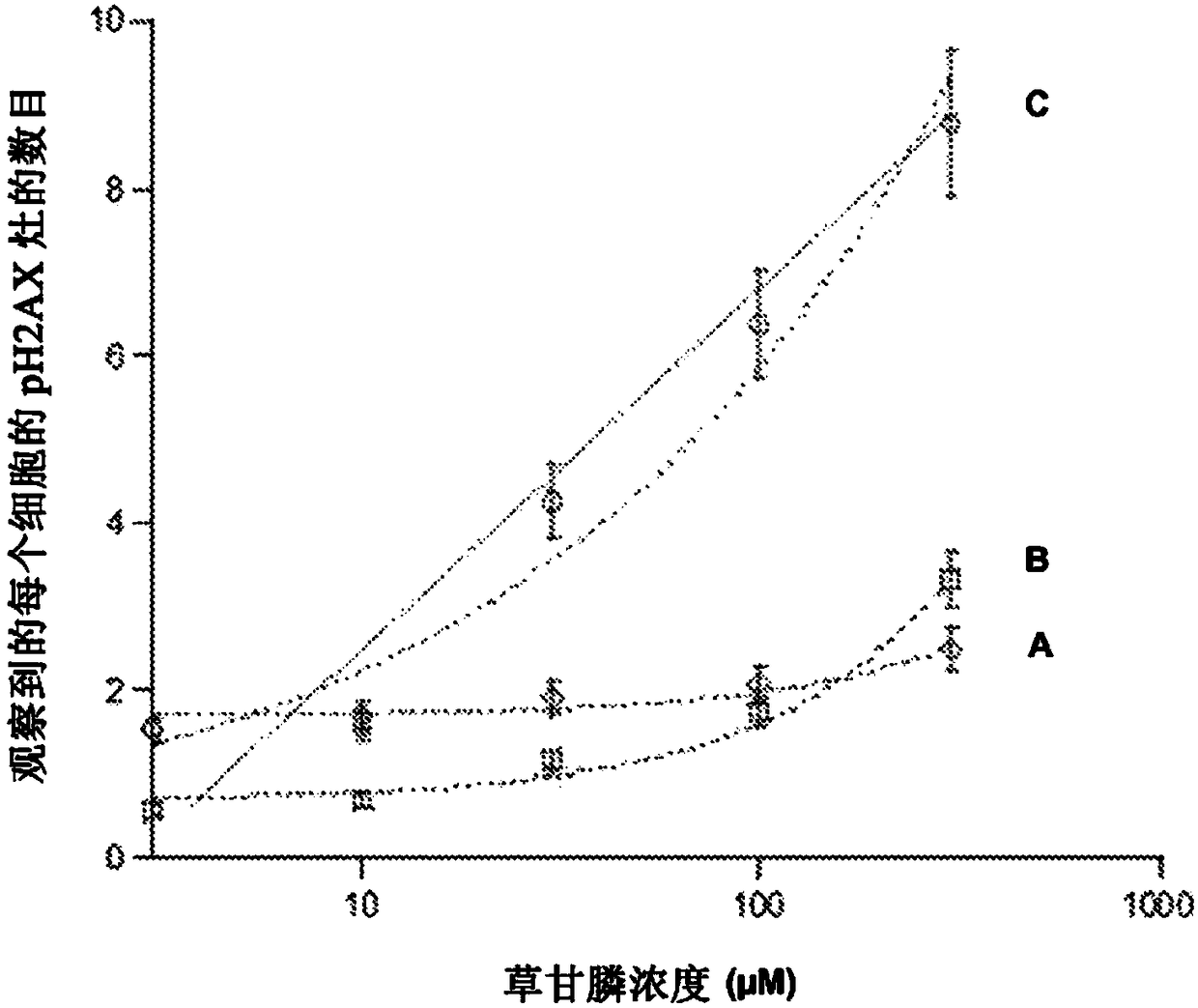Individual method predictive of the dna-breaking genotoxic effects of chemical or biochemical agents
A technology of chemical reagents and biochemical reagents, applied in the field of toxicology, can solve problems that are far from reaching a consensus and have no operable solutions
- Summary
- Abstract
- Description
- Claims
- Application Information
AI Technical Summary
Problems solved by technology
Method used
Image
Examples
Embodiment 1
[0111] Determination of reference concentration of glyphosate (chemical reagent) on control fibroblast cell line
[0112] Commercially available 1BR3 and 149BR control fibroblasts were expanded according to the supplier's (SIGMA-ALDRICH) recommendations until the desired cell numbers were obtained. After obtaining a sufficient number of cells (usually after 1 to 3 weeks), a first experiment is carried out using the method of the invention. Cells were seeded on glass coverslips in Petri dishes. A portion of these coverslips was then contacted with a test medium containing glyphosate (CAS No. 1071-83-6) at the given concentrations given in Table 1 below.
[0113] Table 1
[0114] Detection of the number of pH2AX foci after 24 hours of exposure of 1BR3, 149BR control fibroblasts and 04PSL cells to glyphosate depending on the concentration of glyphosate used
[0115]
[0116] After exposure to given concentrations of glyphosate, cells were kept in an incubator at 37°C. Afte...
Embodiment 2
[0129] Determination of Reference Concentrations of Chemotherapeutic Drug 5FU (Chemical Reagent) on Control Fibroblast Cell Lines
[0130] Commercially available MRC9 control fibroblasts were expanded according to the supplier's (SIGMA-ALDRICH) recommendations until the desired cell number was obtained. After obtaining a sufficient number of cells (usually after 1 to 3 weeks), a first experiment is carried out using the method of the invention. Cells were seeded on glass coverslips in Petri dishes. A portion of these coverslips was then contacted with a test medium containing 5FU at the given concentrations given in Table 2 below.
[0131] Table 2
[0132] Detection of the number of pH2AX foci in MRC9 control fibroblasts, GM02718 and 03HLS cells exposed to different concentrations of 5FU for 24 hours
[0133]
[0134] After exposure to the given concentrations of 5FU, the cells were kept in an incubator at 37°C. After 24 hours of exposure to 5FU at the given concentrati...
PUM
 Login to View More
Login to View More Abstract
Description
Claims
Application Information
 Login to View More
Login to View More - R&D
- Intellectual Property
- Life Sciences
- Materials
- Tech Scout
- Unparalleled Data Quality
- Higher Quality Content
- 60% Fewer Hallucinations
Browse by: Latest US Patents, China's latest patents, Technical Efficacy Thesaurus, Application Domain, Technology Topic, Popular Technical Reports.
© 2025 PatSnap. All rights reserved.Legal|Privacy policy|Modern Slavery Act Transparency Statement|Sitemap|About US| Contact US: help@patsnap.com



